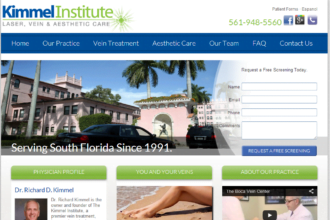 Health care reform brings significant changes to the way health care is delivered and paid for. Tying reimbursement to the quality of care shifts financial responsibility to the provider. The emphasis on a patient-centric approach will require a greater utilization of cost effective remote patient engagement.
Health care reform brings significant changes to the way health care is delivered and paid for. Tying reimbursement to the quality of care shifts financial responsibility to the provider. The emphasis on a patient-centric approach will require a greater utilization of cost effective remote patient engagement.
 Health care reform brings significant changes to the way health care is delivered and paid for. Tying reimbursement to the quality of care shifts financial responsibility to the provider. The emphasis on a patient-centric approach will require a greater utilization of cost effective remote patient engagement. Accountable Care Organizations, Managed Care Organizations, Health Systems, Pharmaceutical Companies, Community Health Centers, and Home Health Services will be developing and deploying new ways to engage patients/members across their spectrum of care. Few organizations are equipped with the proper tools and methodology to maximize efficiency and reimbursements in a reform environment. This is will create a demand for the utility of remote patient engagement.
Health care reform brings significant changes to the way health care is delivered and paid for. Tying reimbursement to the quality of care shifts financial responsibility to the provider. The emphasis on a patient-centric approach will require a greater utilization of cost effective remote patient engagement. Accountable Care Organizations, Managed Care Organizations, Health Systems, Pharmaceutical Companies, Community Health Centers, and Home Health Services will be developing and deploying new ways to engage patients/members across their spectrum of care. Few organizations are equipped with the proper tools and methodology to maximize efficiency and reimbursements in a reform environment. This is will create a demand for the utility of remote patient engagement.
Three Common Elements of Health Care Reform
No one knows exactly how the future iterations of health care reform will evolve. However, we can be reasonably certain that the following elements will put a greater emphasis on remote patient engagement.
- Larger organizations that reimburse and/or provide health care services will do this through integrated networks like Accountable Care Organizations (ACOs), Managed Care Organizations (MCOs), or other aggregations of providers;
- Reimbursement will utilize rewards and penalties based upon patient outcomes or utilization of services that could have been avoided;
- Strategic use of technology will be essential to organizing these new collaborations; redefining workflow and being applied to match financial incentives.
The Patient Portal Is Not Enough for a Patient-centric Approach
Moving from fee-for-service to an accountable care model requires actually making the patient the center of care. A patient-centered approach focuses on preventative care, management of long-term health issues, and proactive care management. To achieve this, remote patient engagement is essential. Right now, much of the focus is on the patient portal and patient/member communications. Both come with inherent challenges adapting to an outcomes-based reimbursement model. In order to meet their financial incentives, providers will be seeking solutions to knock down the walls built by a fragmented health care delivery system of managing acute health problems.
The patient portal’s main challenge is that it is not collaborative; it relies on a web login or email contact. Emails are largely ignored and by putting the burden on the patient to log on to the portal you are requiring an additional step that is not convenient or efficient and will fail to engage patients across their care continuum. Helping patients make health care decisions throughout their care is vital to improving health outcomes and reducing costs. To do this, patients/members need actionable information that is relevant to them and that is delivered in a convenient and unobtrusive manner.
The mobile phone is the ideal solution. Lack of such engagement leads to preventable or treatable illness and drives costs. From non-adherence of medical advice to not keeping follow-up appointments, significant cost savings can be realized from awareness of risk factors and modifiable behavioral issues. Developing and deploying a mobile strategy for remote patient engagement is almost mandatory, as the mobile phone is the most common device owned by patients across socio-economic demographic groups. Remote patient engagement will prove to be a powerful asset for outcomes based reimbursement models.
Communication Strategies Need to Change to Match Our Lifestyle
Tying reimbursements to outcomes will be the impetus for health care embracing the mobility era. However, even health care organizations that are adopting various technologies are still reusing their ineffective traditional messaging and protocols of the past that were not designed for our current in-the-moment lifestyle. This includes making a mobile version of a website, developing custom apps, or sending mass emails and letters to patients/members. While some of these efforts have their own utility, this is not the way that we interact with each other, or the world around us. Health care organizations that revamp their messaging to leverage mobility will find cost effective ways to get information to patients/members that will prompt an action or inaction. The power of proper messaging is a very significant tool. The messages can be one-way or two-way communications and can be tailored to different populations or practices or organizational needs. It can also enhance business management and operational needs by drastically reducing human cost for daily activities. There will be an increased reliance on this technology to help health care organizations thrive in a reform environment.
Last Thoughts on Remote Patient Engagement
The specifics of health care reform may change over time, but the common elements emphasize risk sharing and a patient-centric approach. This will require a better-informed and more engaged patient. Most currently utilized communication methods and tools of the past will fail in reaching these new goals, which will leave them looking for different solutions. Remote patient engagement has significant potential for achieving cost and quality benchmarks through increased adherence, compliance, and retention.
Originally posted on Gold Mobile
(healthcare reform driving patient engagement / shutterstock)









